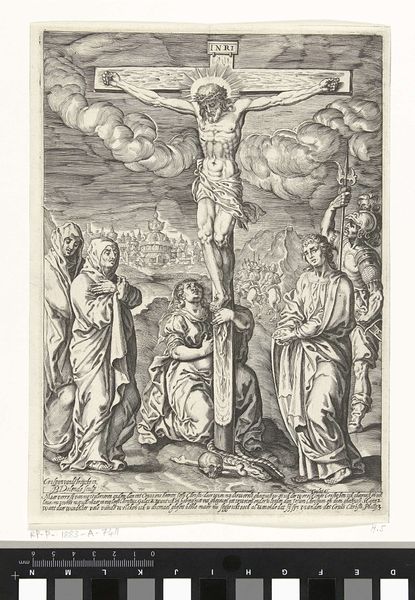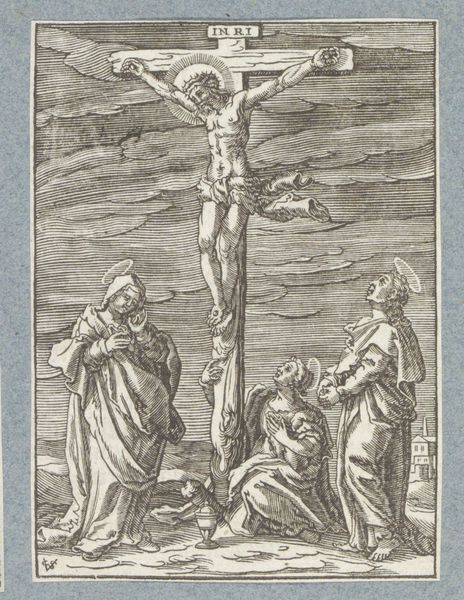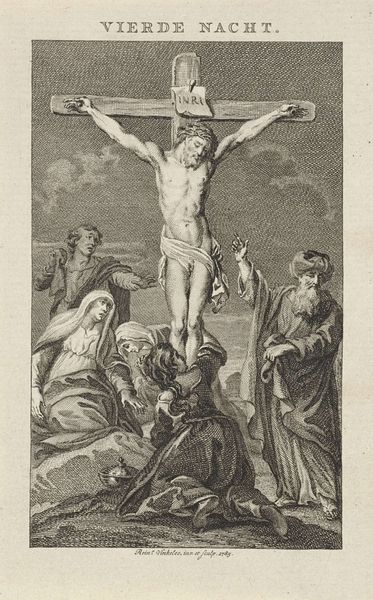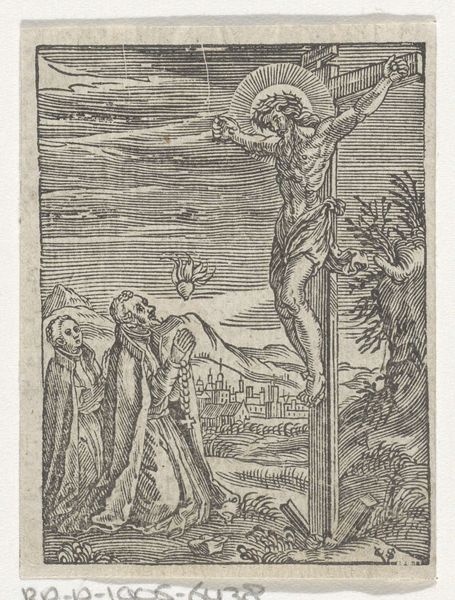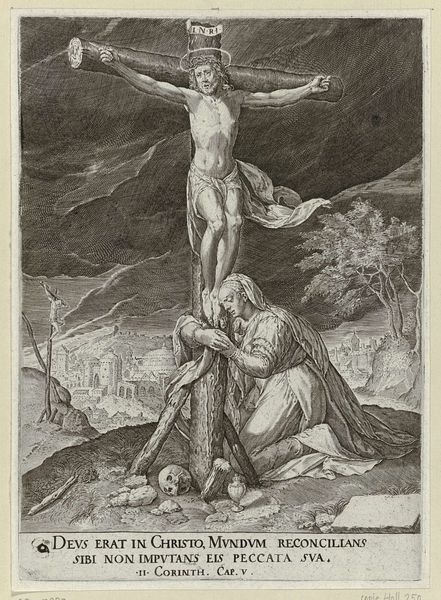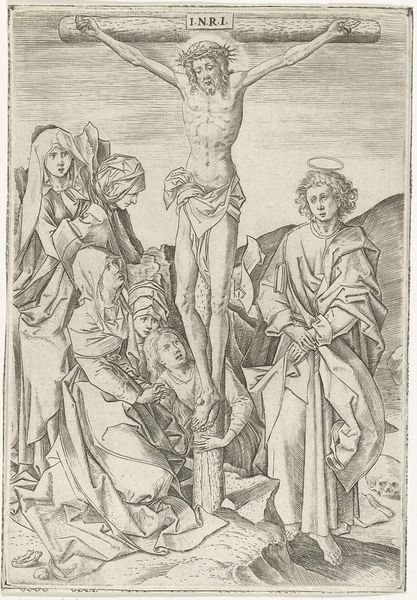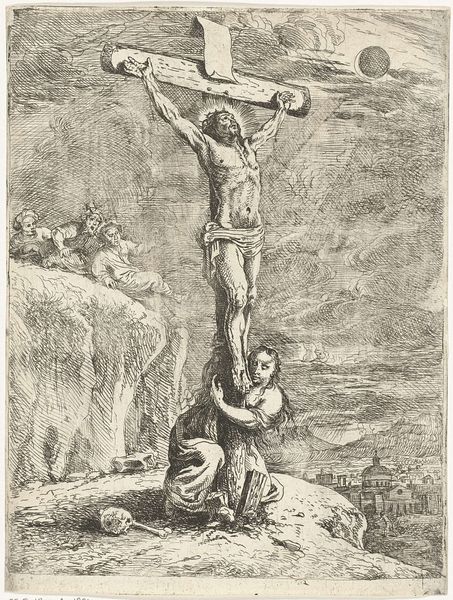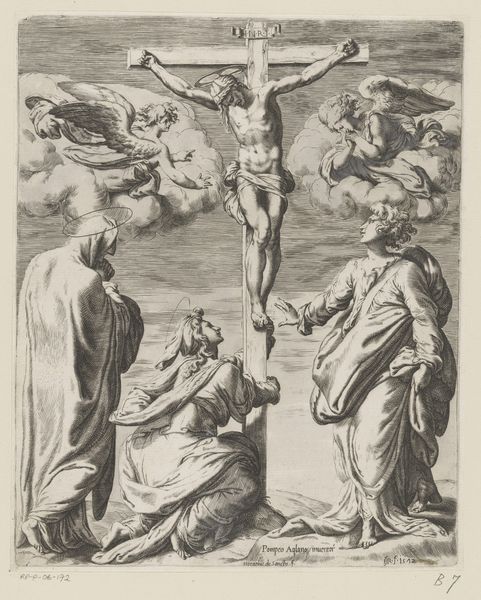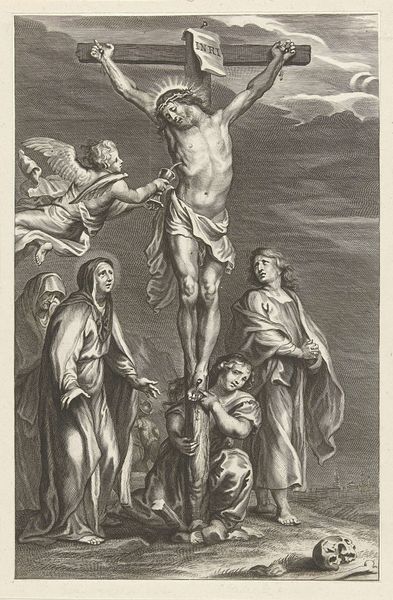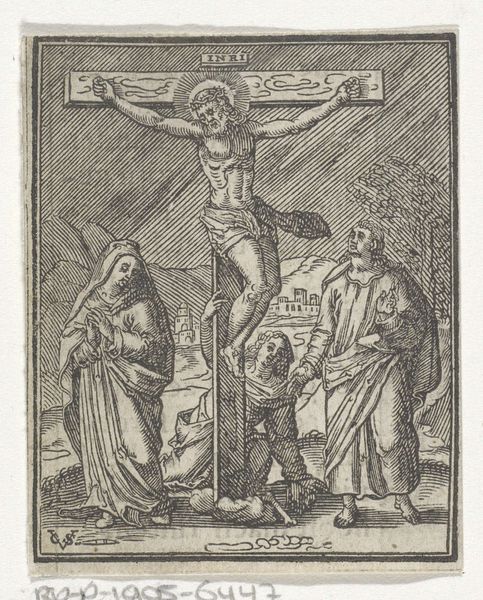
drawing, print, etching, ink
#
drawing
#
narrative-art
#
baroque
# print
#
etching
#
figuration
#
ink
#
history-painting
Dimensions: height 108 mm, width 65 mm
Copyright: Rijks Museum: Open Domain
Cornelis Schut created this print of the Crucifixion in the 17th century using the engraving technique. An engraver uses a tool called a burin to manually carve lines into a metal plate, which is then inked and printed. The resulting image bears the mark of this process. See how the composition is entirely built from a network of precise, directional lines. Schut would have needed considerable skill and control to create the scene's tonality and drama. The cross-hatching gives the figures volume and depth. It's worth considering the social context of printmaking at this time. Prints like these had a devotional purpose, and were also relatively inexpensive to produce. This meant that religious imagery could be widely disseminated, playing a key role in shaping popular belief. This small print therefore reflects a complex intersection of artistic skill, religious practice, and early mass media. Appreciating its material origins helps us understand its cultural impact.
Comments
No comments
Be the first to comment and join the conversation on the ultimate creative platform.
